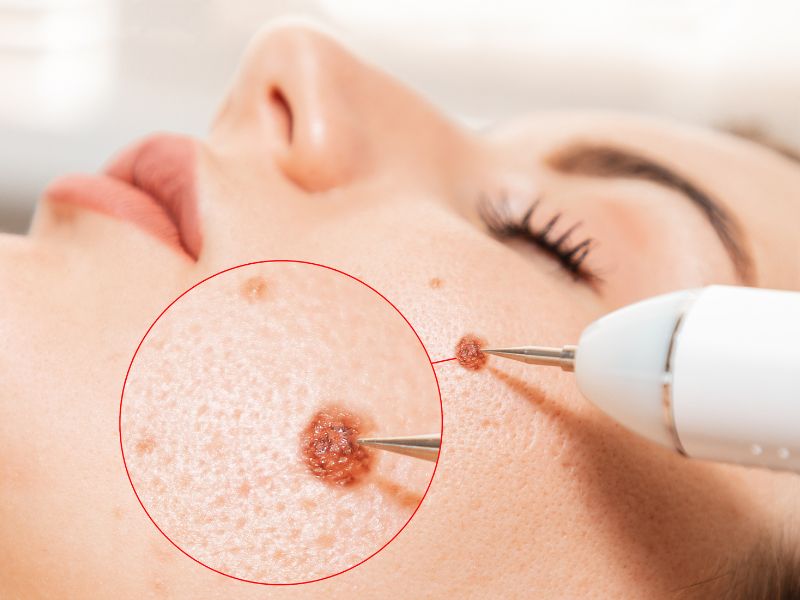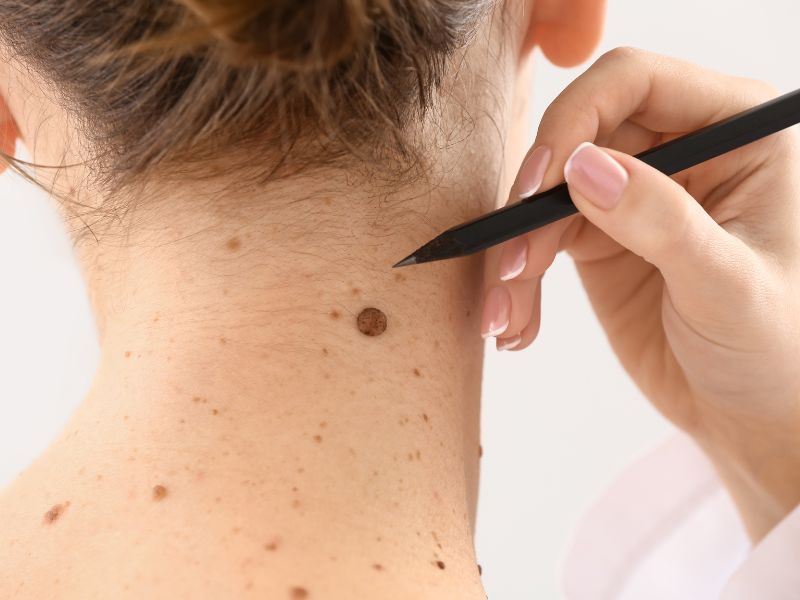Skin moles, or nevi, are common skin growths that can appear anywhere. They are typically small, dark-colored spots that develop when melanocytes (pigment-producing cells) cluster together. While most moles are harmless, it’s essential to understand their nature, characteristics, and when to seek medical attention.
Nature Of Skin Moles
Skin moles are generally benign, non-cancerous growths that vary in size, shape, and color. They can be flat or elevated, round or irregular, and range from flesh-colored to dark brown or black. Some moles may have hair growing from them, which is perfectly normal.

Canva. com
Development And Causes
Moles develop due to genetic factors and exposure to sun ultraviolet (UV) radiation. They often appear during childhood and adolescence but can also emerge later in life. Individuals with fair skin, light-colored hair, and a family history of moles are more prone to developing them.
Monitoring Changes
While most moles are harmless, monitoring them for size, color, shape, or texture changes is essential. If you notice any sudden changes or the emergence of new moles, it is advisable to consult a dermatologist promptly. These changes may be an indication of a potentially concerning condition.

Canva. com
Skin Mole Vs. Melanoma
Melanoma is a type of skin cancer that can develop from melanocytes. It’s crucial to differentiate between a benign mole and a potentially malignant growth. The ABCDE rule is a helpful guideline to assess moles for potential melanoma:
- A – Asymmetry: One half of the mole does not match the other.
- B – Border Irregularity: The edges are irregular, notched, or blurred.
- C – Color: The mole exhibits uneven coloring, with various shades of brown, black, or even red or blue.
- D – Diameter: Melanomas are typically larger than pencil erasers.
- E – Evolution: Any change in size, shape, color, or texture warrants prompt medical attention.
